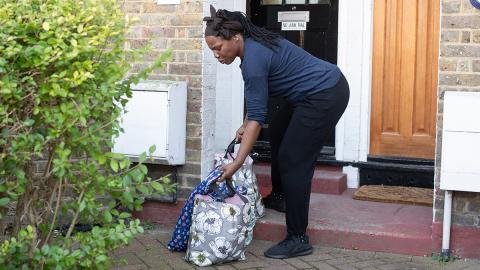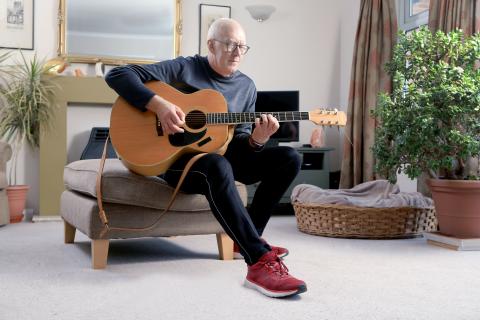Strengthening – like any physical activity – should be approached with caution for people living with Long Covid
It is a new condition and research is developing. But people living with Long Covid have reported that returning to physical activity and strengthening can increase symptoms.
For some, as mild symptoms subside and energy levels return, it may be possible to try strength training whilst monitoring for symptoms and starting slowly.
For others, with more severe symptoms such as chest pain, fatigue, continued muscle pain and breathlessness return to exercise should be discussed with health care professionals prior to attempting it as it can be dangerous and lead to a significant setback in recovery.
Many people won’t know how they will respond to being more active. Therefore, the best approach is to start very slowly keeping your heart rate low, track your progress and go at the pace that works best for you.
If you experience symptoms such as fatigue, chest pain, breathlessness or severe muscle pain then do not push yourself – stop, rest and start again at a lower intensity and duration when you feel ready.
If you find that activities such as having a shower, getting dressed, preparing a meal or working cause significant symptoms it may be too early to start strengthening.
Advice for strengthening after Long Covid
If you are finding you can perform strengthening activities without experiencing any degree of reaction from your body, the following advice may help you incorporate it into your daily life.
- Use a diary that tracks your response during and after the activity. This will help you monitor how you reacted and chart any progress. Stop if you get symptoms during exercise. Download the CSP’s one here.
- Strengthening doesn’t need to involve heavy weights or expensive gym memberships. It can be done at home, using either your bodyweight or household items, such as tins of beans and bags of flour.
- Racket sports, tai chi and Pilates all count, as do day-to-day activities such as carrying the shopping and gardening.
- Find out about accessing your local pool. Walking in water, swimming or aqua aerobics is tremendous cardiovascular exercise as well as strengthening activity. They help your muscles, while the water lessens resistance on the joints. Consider incorporating water weights if you tolerate as you progress and get stronger. There’s also buoyancy belts, which simulate water jogging, and other items like aqua noodles to help you keep afloat. Be aware if you have developed heat intolerance and monitor your symptoms accordingly.
- If you have stair access inside your home try going up and down as many times as tolerated to strengthen your legs. If you don’t have stairs try marching on the spot, making an effort to lift your knee to waist height.
- Make any work-out your body can handle a goal. However, taking time out to recharge your mind is just as important as building your muscles. Activities such as mindfulness and meditation are proven to help.
- Whatever you do, just make sure it causes your muscles to feel warm or shake and aim to do it on two days of the week.



